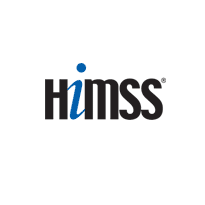Interoperability proved the favorite topic for the US health IT industry gathered in New Orleans this week for the annual HIMSS 2013 trade show.
Even former president Bill Clinton was on message in a keynote speech that stressed the importance of IT to integrate heath care and empower patients.
The US has achieved a groundswell of adoption of electronic medical records by hospitals and family doctors. Stage one was on meaningful use, while stage two focuses on interoperability.
The Department of Health and Human Services has set the goal for 50% of family doctors and 80% of hospitals to have an EMR by the end of 2013.
Dr Vishal Agrawal, president of Harris Healthcare, which has just been selected for a massive interoperability project between the Department of Defence and the Veterans Association, told EHI: “With EMRs there is now a real danger we replace paper islands of data with even more digital islands, we have to focus on interoperability.”
The Office of the National Coordinator for Health Information Technology in the US is investing in health information exchanges.
These are a series of related initiatives to create interoperable EHR-related information sharing with confidentiality, privacy, and security. HIEs remain a work in practice, yet to reach the same critical mass as EMRs.
National coordinator for health information technology, Dr Farzad Mostashari, spoke at a press conference on Wednesday where he announced a series of new initiatives to accelerate the exchange of data between healthcare providers and promised to remove barriers and disincentives to share data.
“We’re really stating our intent to encourage data sharing rather than data hoarding and we want your ideas,” said Dr Mostashari.
He added that barriers and obstacles to data sharing were in many cases not about technology.
“We recognise that technology, while necessary, alone will not be enough to provide the connected care patients deserve.”
One of the initiatives that will be ramped up is the hugely successful Blue Button initiative. First pioneered by the Veterans Administration and extended to all Medicare patients, Blue Button enables patients to easily download their EMR.
“We’re now planning on plussing it up, with more structured data,” Dr Mostashari said.
With billions of dollars of incentive payments up for grabs it was little wonder to see so many vendors at HIMSS showing their interoperability solutions, products and road maps.
Allscripts’ $235m acquisition of Israeli portal and interoperability specialist dBMotion was one of the most eye-catching announcements of the week.
The need to interoperate has also made for some unlikely bed-fellows with six major EMR vendors announcing plans to co-operate on interoperability to create the CommonWell Health Alliance.
If it delivers against ambition, the initiative could also help interoperability outside the US.
Others read the announcement as a more defensive move by EMR vendors who are seeing arch rival Epic, notable absentee from the alliance, stretch its lead in the US hospital EMR market.

